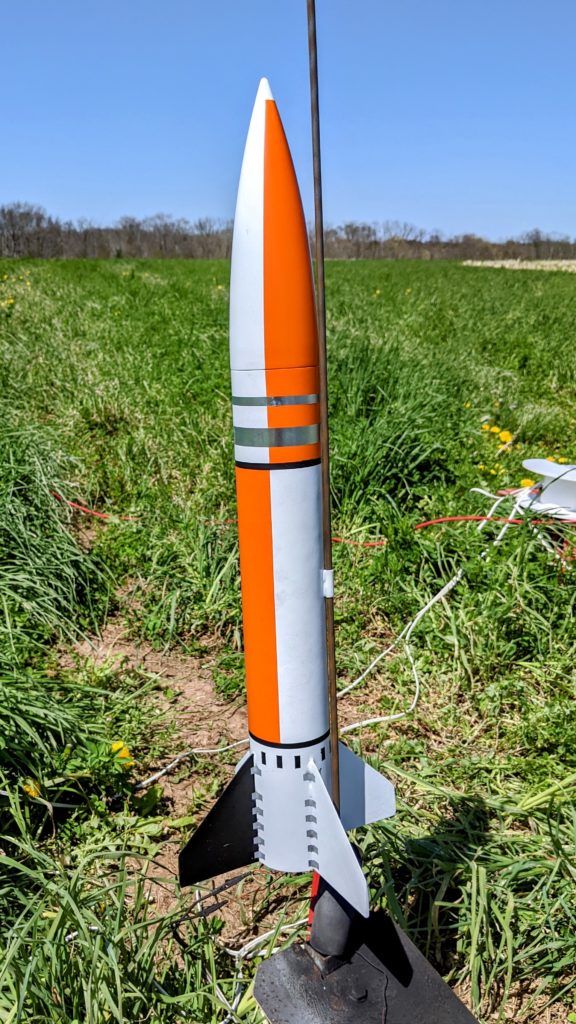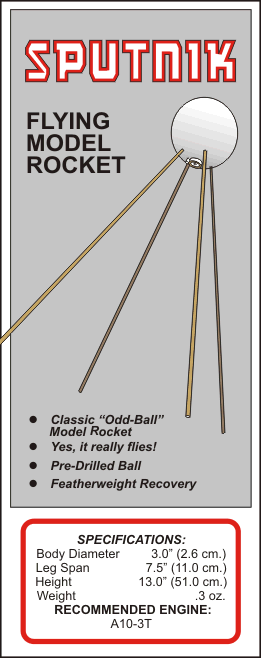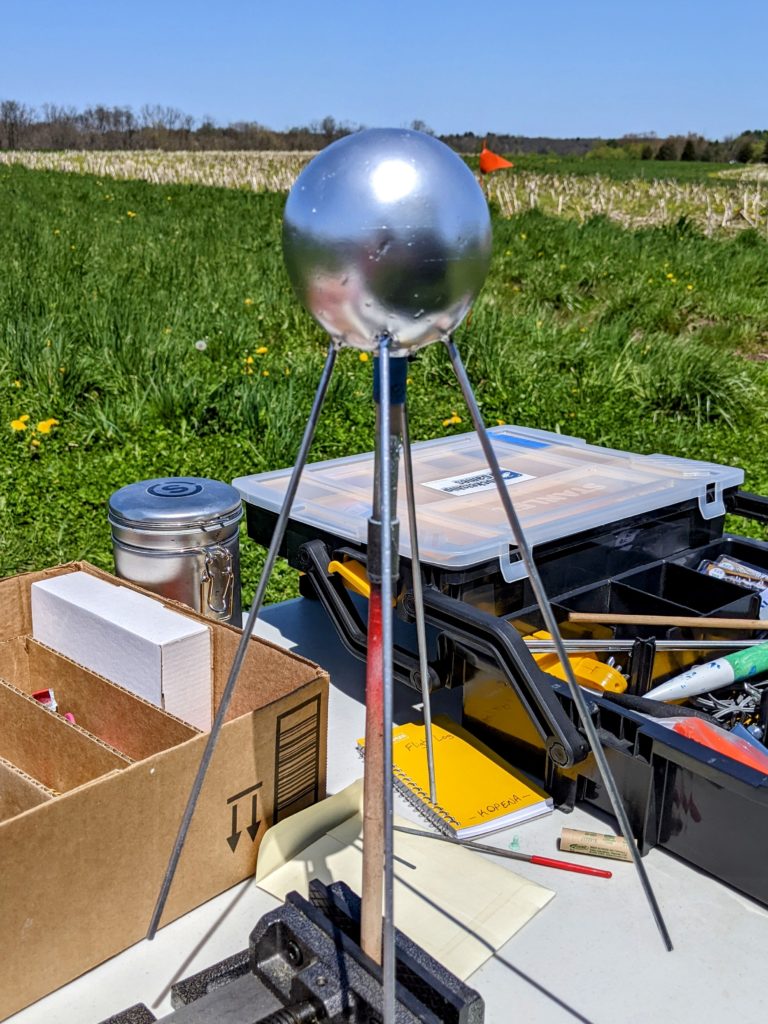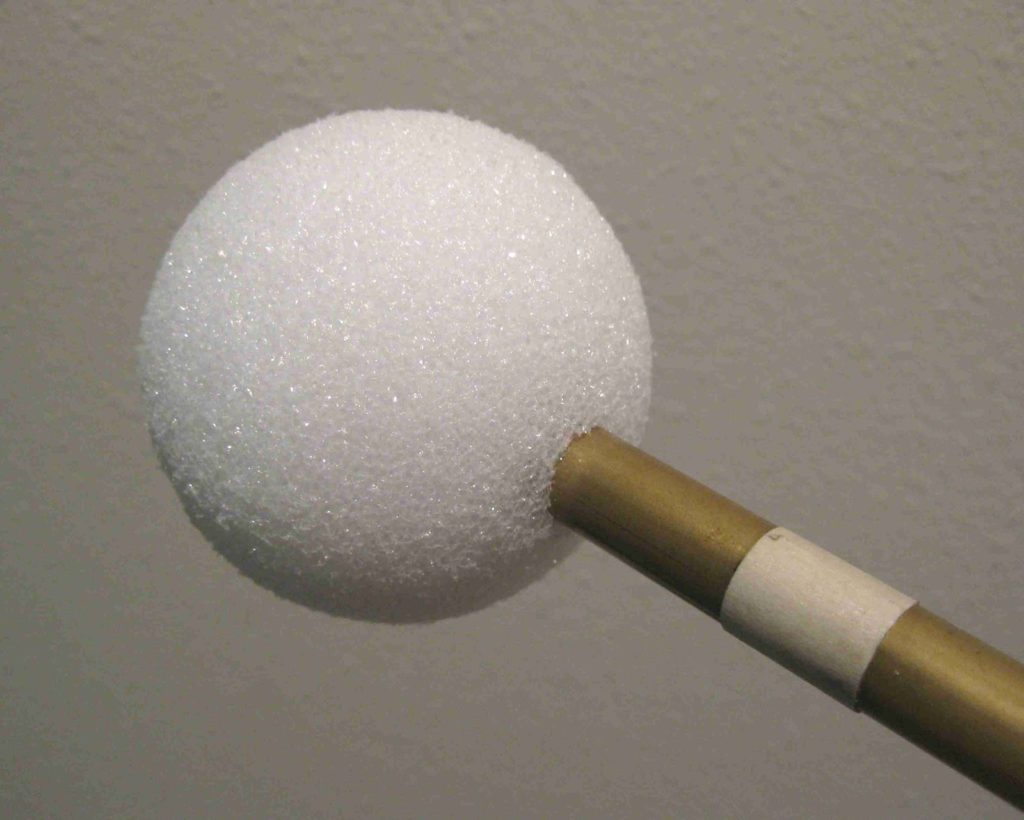Alice’s Rainbow Bobby, a very alternative take on Launch Lab Rocketry’s Bullet Bobby:
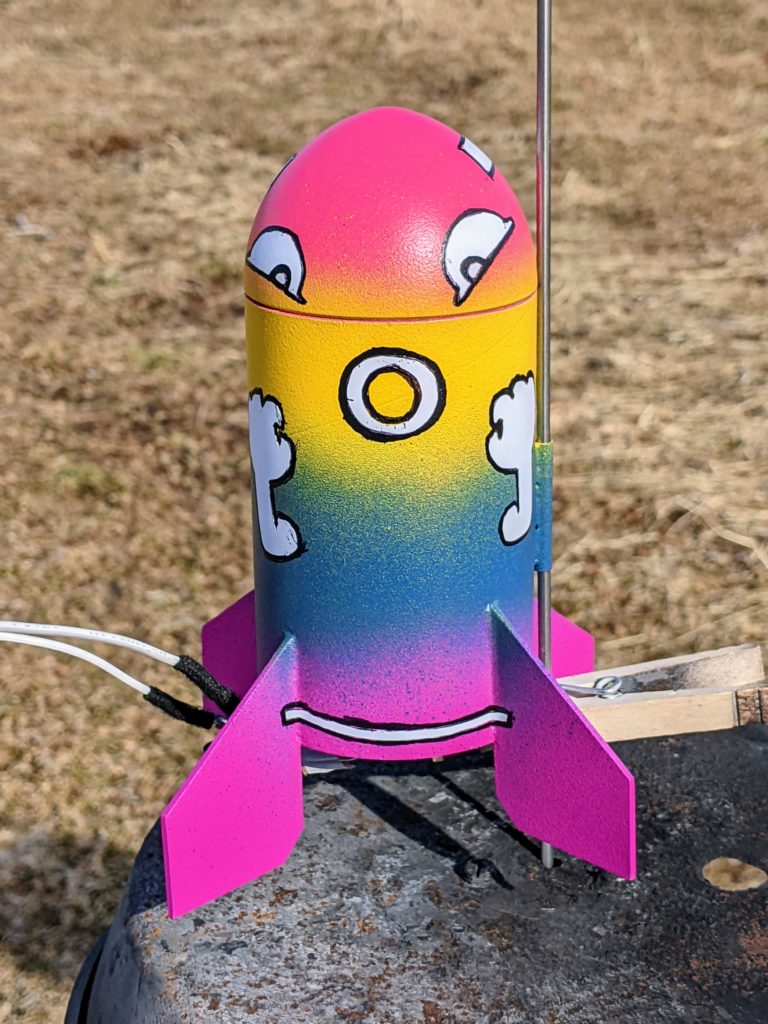
Rainbow Bobby is just suuuper super super excited to fly! Yeah yeah yeah!
PARA’s Jim H gave Alice this kit at January’s launch. It’s labeled as a Level 2 build but I think it’s a good kit for beginners. There’s almost no knife work (the fins come completely cut out) and you can produce a good result without sanding, sealing, or papering. Alice built the whole thing herself with minimal guidance.
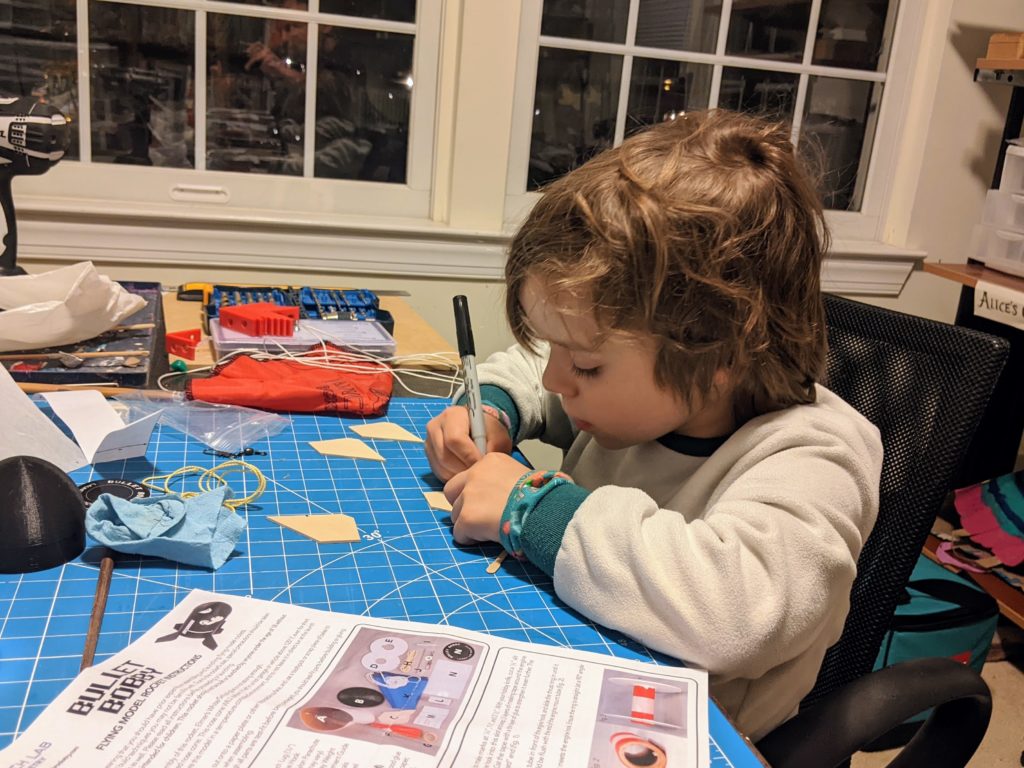
Carefully measuring & marking where the fins will attach.
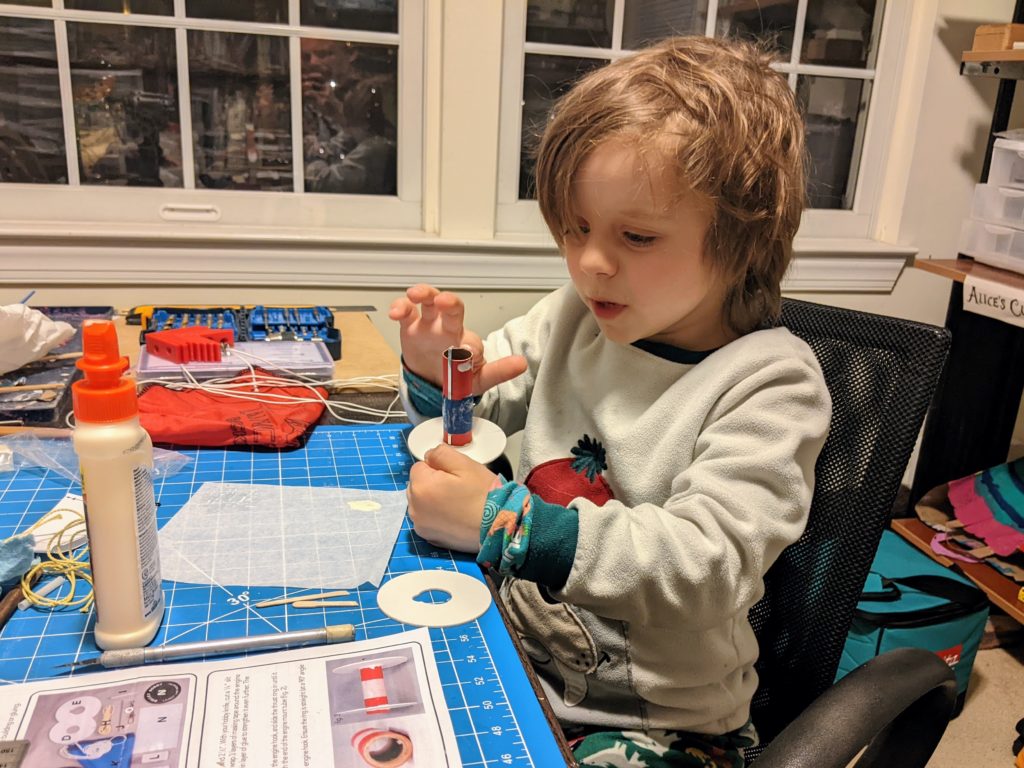
Assembling the motor mount.
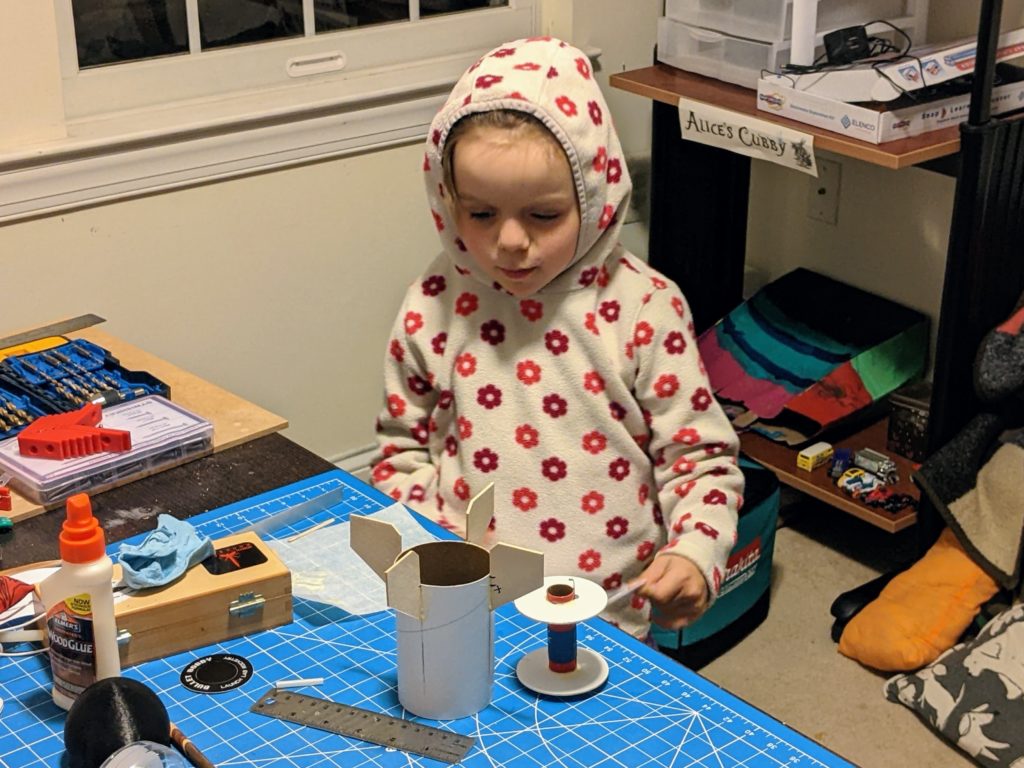
One last check right before bedtime that the fins are still drying in place.
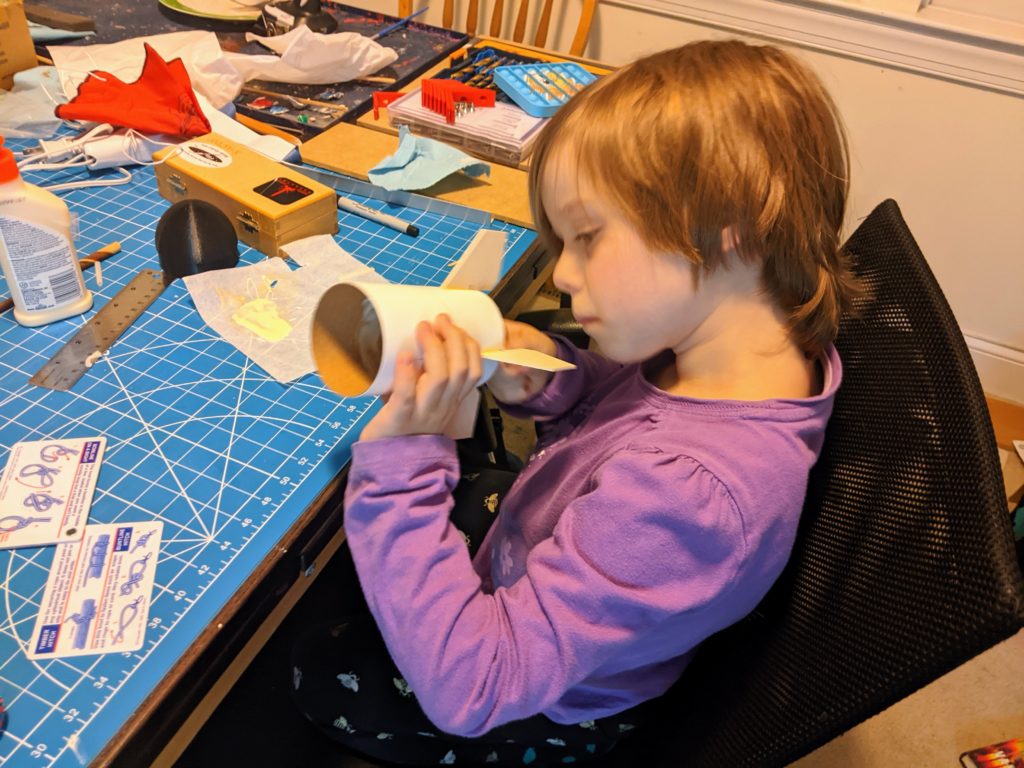
Gluing in the motor mount.
I did wind up doing most of the spray painting as the cans are too big for Alice’s hands to make the rainbow she wanted in such a small length. Even I had to talk her into dropping a couple colors. But I did follow strict specifications and supervision to achieve her intensely deliberated paint scheme. There was even a household vote on candidate designs. I admit I was skeptical at first of the stickers layout she came up with, but the rocket turned out very characterful and wonderful.
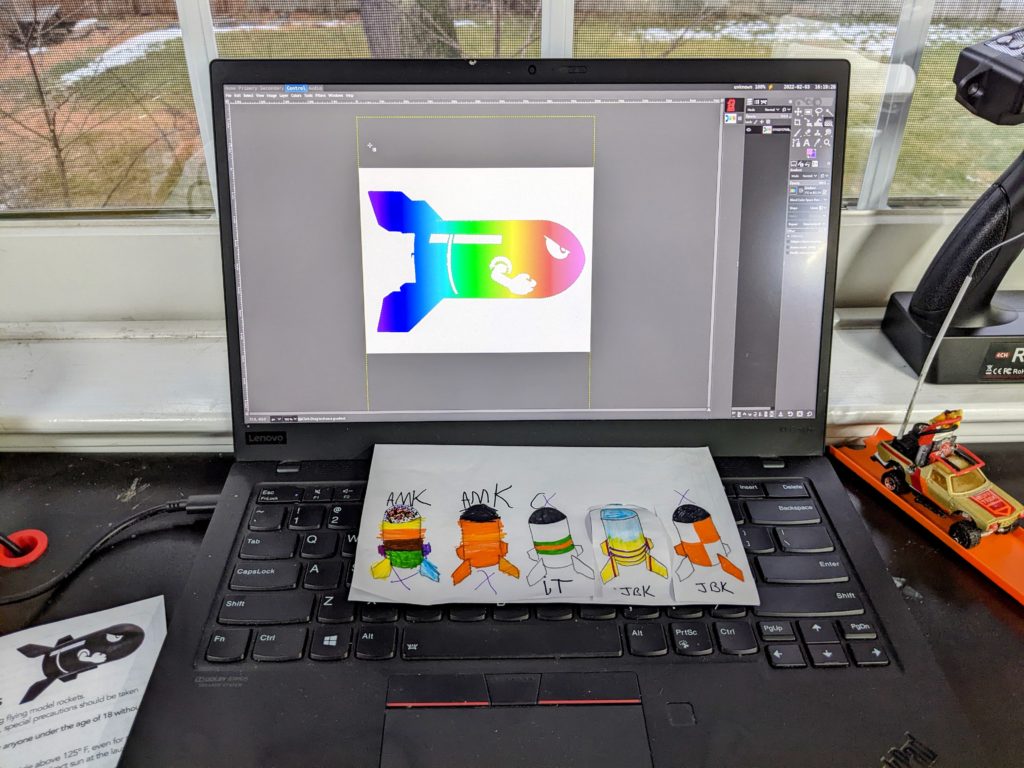
Very serious studies went into the paint scheme, including a household vote on a slate of sketches as well as computer aided visualization, all to wind up with… a rainbow! Surprise! I WOULD HAVE NEVER GUESSED.
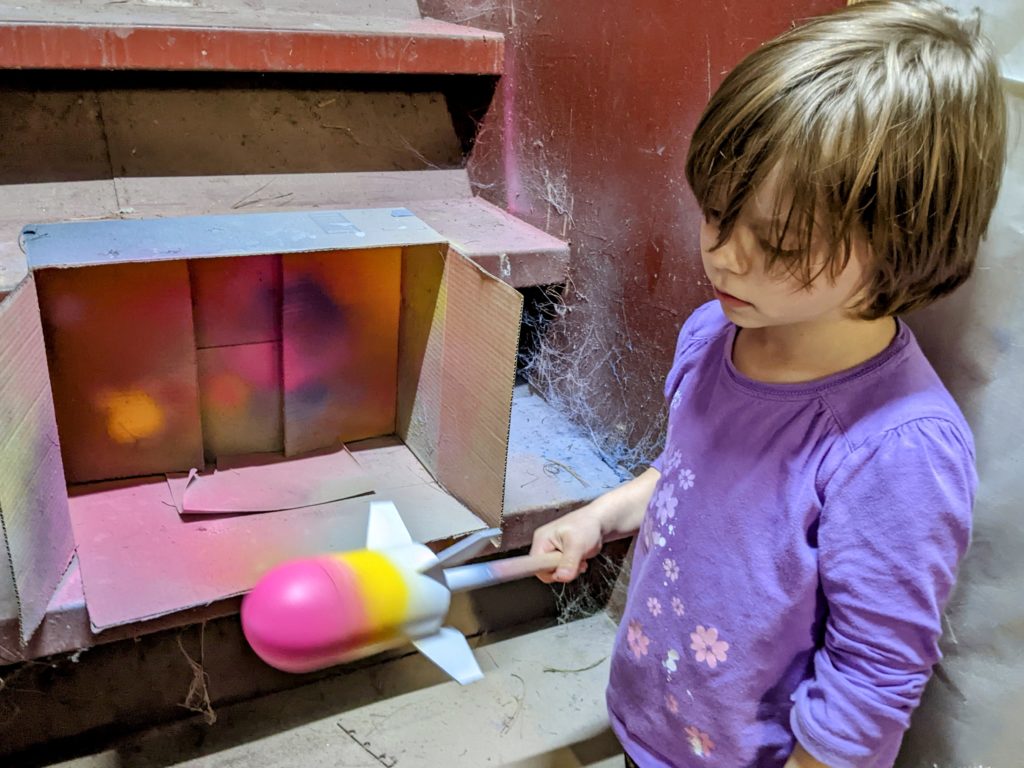
Alice evaluating whether she wants to simplify the paint scheme to make it more feasible for her to paint, or take a gamble on trusting dad to execute her vision… Decisions, decisions…
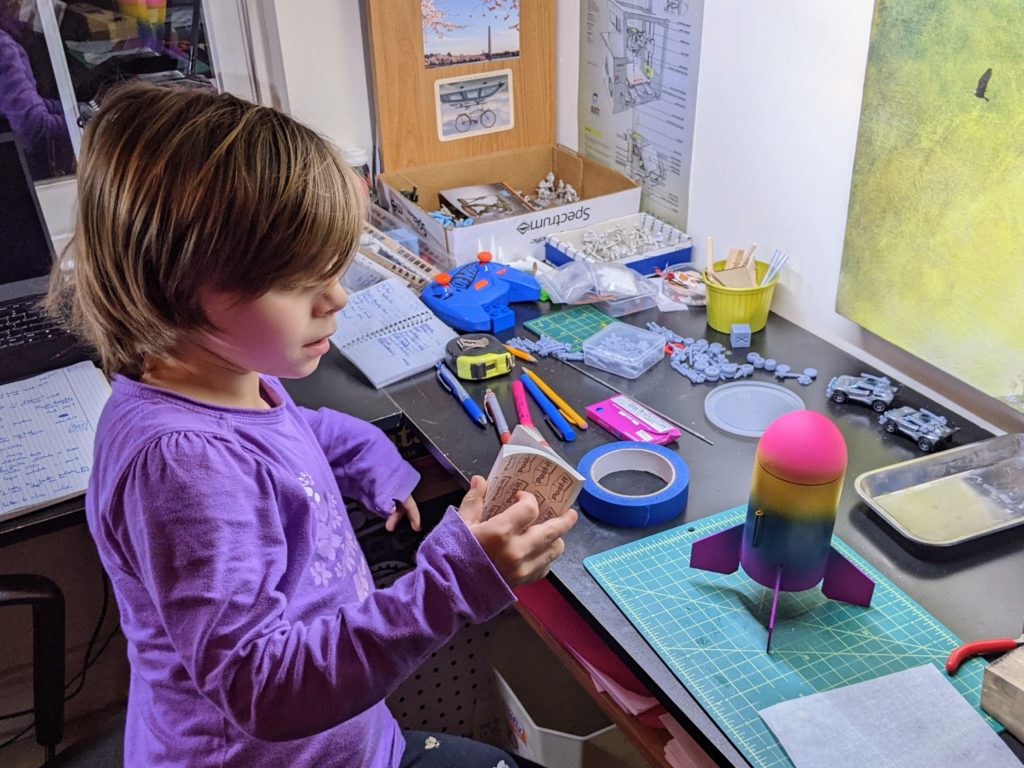
Checking her notes before the all-important stickering phase.
The debut launch was… dramatic. The launch lug somehow bound on the rod and took it for a ride as the rocket looped hard into the ground right in front of us. After some field repairs to re-attach fins, launch lug, new parachute, etc., the second flight went up well but again lost a fin on landing, ending flights for the day. At this point Rainbow Bobby’s had fins ripped off on 3 out of 4 flights. Part of it is that the official motor recommendations are a bit underpowered and the delay too long for how much nose ballast is mandated by the instructions—it comes down hard. Compounding that, many launches this year have featured rock hard frozen ground, wrecking numerous rockets on landings that might be fine in summer.
To some extent I think the kit should have been designed with through-the-wall fins given how little attachment they have to the body and how far below it they hang. One tweak to the kit as-is that I’ve applied in our repairs is to drill holes in the body tube where the fins attach, to allow glue plugs to form inside. However, it’s a tradeoff; reinforcing inside the tube makes it harder to replace fins if/when they break rather than tear off. Another thought is that the ballast might be too much. It makes sense, but intuitively seems like a lot when you actually hold the rocket. Perhaps the design doesn’t account for the effect of base drag from the low fineness ratio (its stubbyness)?
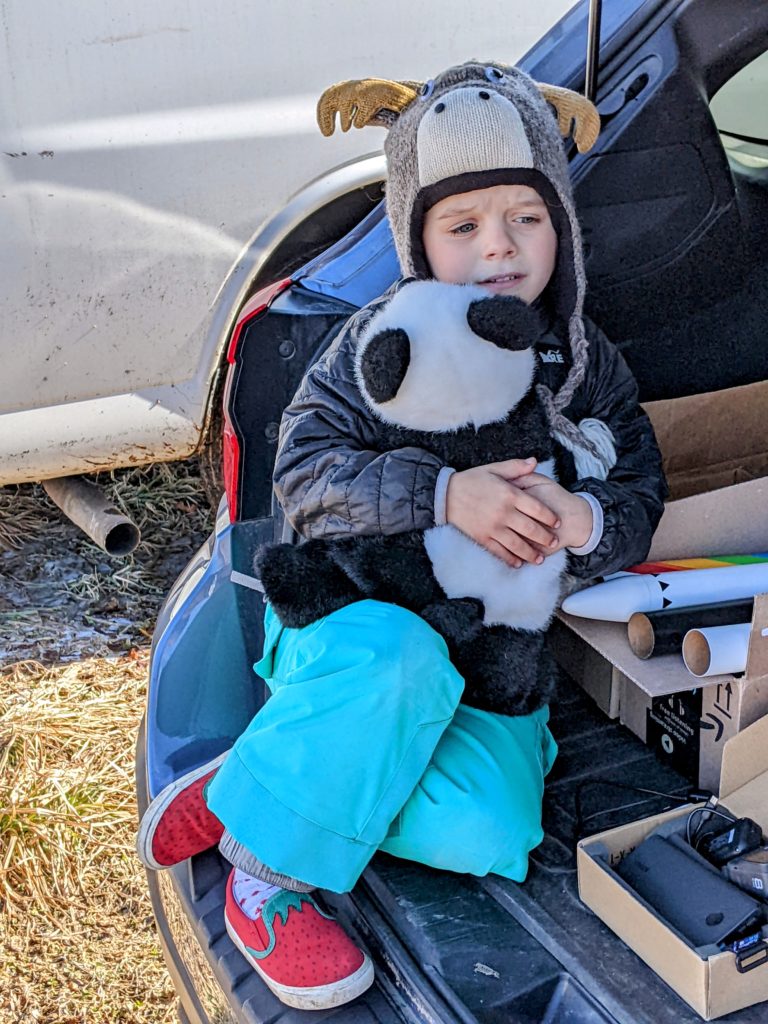
Waiting for Bobby’s first flight!
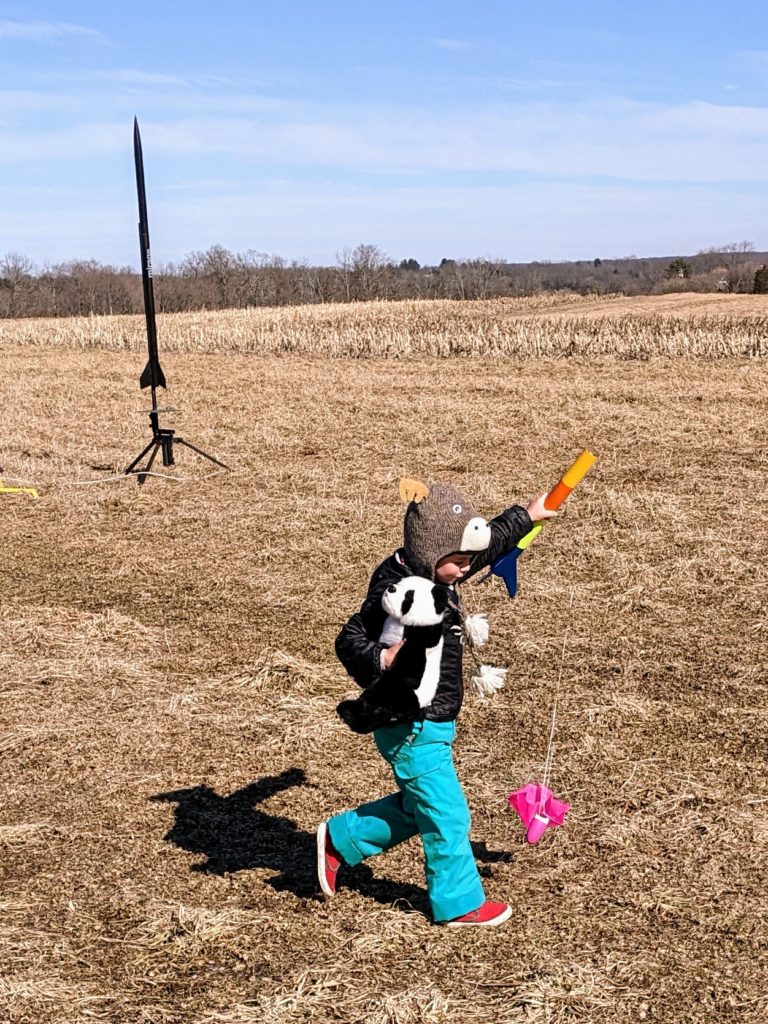
Recovering our OTHER rainbow rocket, a stand-in for the less successful Bobby recoveries.

Sleeping off a big day and a couple disappointments on the way home (we also lost our Tall One super-roc to a tree).
But, this past weekend the ground was soft and it just happened that both of the cars next to us had their own Bullet Bobbies! So of course we had a Bullet Bobby Blast-Off, from which all rockets were recovered undamaged.
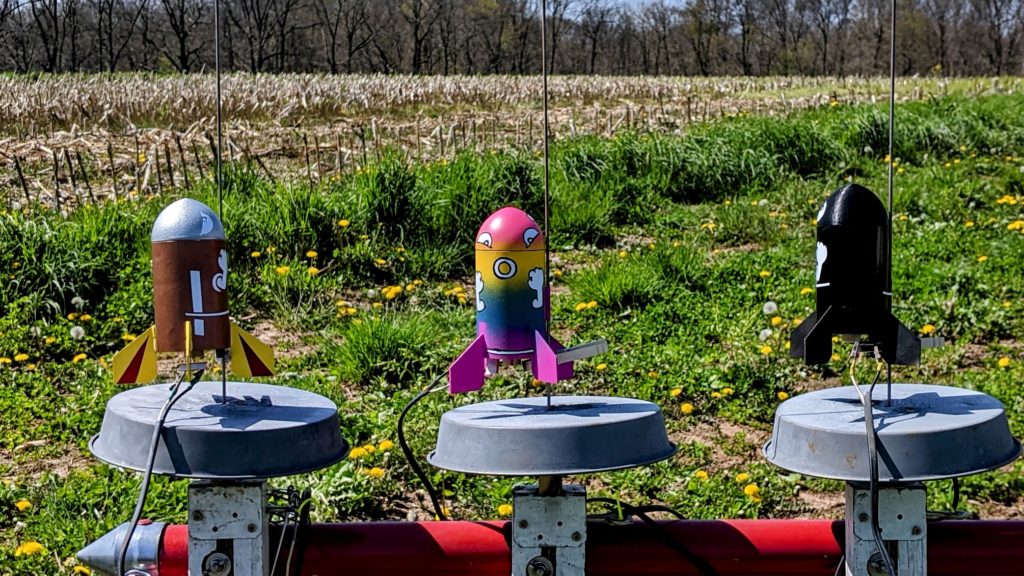
The lineup for the Bullet Bobby Blast-Off.
